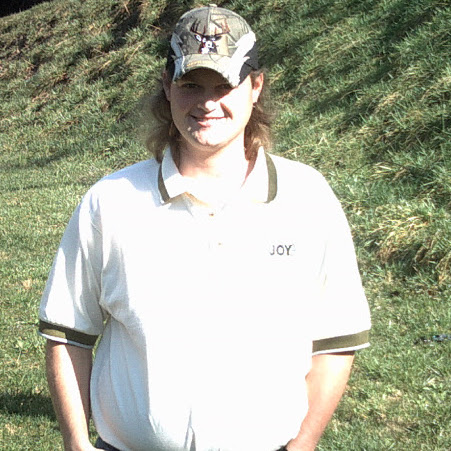Raymond K Gilbert
age ~85
from Clinton, MD
- Also known as:
-
- Raymond D Gilbert
- Raymond Y Gilbert
- Ray K Gilbert
- Raymond K Cilbert
- Phone and address:
-
9413 Hale Dr, Clinton, MD 20735
3017753728
Raymond Gilbert Phones & Addresses
- 9413 Hale Dr, Clinton, MD 20735 • 3017753728
- Glenarden, MD
- District Heights, MD
- Riverdale, MD
- Lucien, OK
- Oklahoma City, OK
Medicine Doctors

Raymond L. Gilbert
view sourceSpecialties:
Family Medicine
Work:
Greater Athens Physicians Inc
1550 Mars Hl Rd, Watkinsville, GA 30677
7067694852 (phone), 7067698372 (fax)
1550 Mars Hl Rd, Watkinsville, GA 30677
7067694852 (phone), 7067698372 (fax)
Education:
Medical School
Medical College of Georgia School of Medicine
Graduated: 1983
Medical College of Georgia School of Medicine
Graduated: 1983
Procedures:
Allergen Immunotherapy
Arthrocentesis
Destruction of Benign/Premalignant Skin Lesions
Electrocardiogram (EKG or ECG)
Pulmonary Function Tests
Skin Tags Removal
Vaccine Administration
Arthrocentesis
Destruction of Benign/Premalignant Skin Lesions
Electrocardiogram (EKG or ECG)
Pulmonary Function Tests
Skin Tags Removal
Vaccine Administration
Conditions:
Abnormal Vaginal Bleeding
Acne
Acute Pharyngitis
Acute Upper Respiratory Tract Infections
Anxiety Dissociative and Somatoform Disorders
Acne
Acute Pharyngitis
Acute Upper Respiratory Tract Infections
Anxiety Dissociative and Somatoform Disorders
Languages:
English
Description:
Dr. Gilbert graduated from the Medical College of Georgia School of Medicine in 1983. He works in Watkinsville, GA and specializes in Family Medicine. Dr. Gilbert is affiliated with Athens Regional Medical Center and St Marys Health Care System.
Resumes

Raymond Gilbert
view source
Raymond Gilbert
view source
Raymond Gilbert
view source
Raymond Gilbert
view source
Raymond Gilbert
view source
Raymond Gilbert
view source
Fireteam Leader At United States Marine Corps
view sourcePosition:
Fireteam Leader at United States Marine Corps
Location:
Baltimore, Maryland Area
Industry:
Military
Work:
United States Marine Corps
Fireteam Leader
Fireteam Leader
Name / Title
Company / Classification
Phones & Addresses
President
Gastrim Corp
Patent Owner/Lessor
Patent Owner/Lessor
6501 Inwood Dr, Springfield, VA 22150
Officer,Chairman
B E P INTERNATIONAL CORP
Us Patents
-
Valve Train System Of Internal Combustion Engines
view source -
US Patent:41518241, May 1, 1979
-
Filed:Nov 4, 1975
-
Appl. No.:5/628467
-
Inventors:Raymond D. Gilbert - Springfield VA
-
International Classification:F02P 1306
-
US Classification:123198F
-
Abstract:When individual cylinders of an internal combustion engine are disengaged from their power-consuming, power-producing role, engine efficiency at small to medium engine loads is improved significantly. This improvement is measured in enhanced fuel economy and reduced air pollutants from the engine's remaining active cylinders. Cylinders change from active to an inactive role as typical push rods and rocker arms of the valve trains are replaced with mechanisms which can hold selected intake valves closed and companion exhaust valves open continously. Convertible valve trains change the power characteristics of cylinders in response to the remote operator's sensed conditions of load changes, special desired engine performance and desired fuel conservation.
-
Segmented Spoilers
view source -
US Patent:55646565, Oct 15, 1996
-
Filed:Aug 29, 1994
-
Appl. No.:8/297578
-
Inventors:Raymond D. Gilbert - Springfield VA
-
International Classification:B64C 358
B64C 510
B64C 900 -
US Classification:244217
-
Abstract:Segmented spoilers are parallel arrays of individually-extended barrier surfaces, such as rotatable eccentrically-mounted disks. The overlapping surface areas extend through a slot on a aircraft surface. When actuated, a segmented array generates a stiff, extendable, profiled spoiler-barrier. The individual surface areas are power-activated from below the airfoil surface according to motor commands from autopilots, operators, sensors and computers. Disk spoiler systems provide very rapid generation and retreat of controllable height barriers. The management of Bernoulli lift phenomenon with disk spoilers has unique use on an aircraft's nose, along the top of its wings, on the forward surfaces of horizontal and vertical stabilizers and within the intake sections of gas turbine aircraft engines. Disks are rotated by electric rotor-positioning motors and aircraft-powered axial force systems.
-
Disk Spoiler System
view source -
US Patent:54583047, Oct 17, 1995
-
Filed:Nov 26, 1993
-
Appl. No.:8/158749
-
Inventors:Raymond D. Gilbert - Springfield VA
-
International Classification:B64C 510
G05D 100 -
US Classification:244 90B
-
Abstract:Spoilers, mounted on vertical stabilizer tail surfaces of large aircraft release controllable Bernoulli forces to augment rudder and aileron aircraft controls. Data from surface pressure sensors, also mounted on vertical stabilizer tail surface, is computer-interpreted to minimize tail drag and structural flight-stress. The spoilers suitable for this role include parallel lines of controllable height barriers, located on the fore part of each side of symmetrical airfoils of airplane tails.
-
Valve Train Systems Of Internal Combustion Engines
view source -
US Patent:41413334, Feb 27, 1979
-
Filed:Jan 13, 1975
-
Appl. No.:5/540516
-
Inventors:Raymond D. Gilbert - Springfield VA
-
International Classification:F02D 1306
-
US Classification:123198F
-
Abstract:When individual cylinders of an internal combustion engine are disengaged from their power-consuming, power-producing role, engine efficiency at small to medium engine loads is improved significantly. This improvement is measured in enhanced fuel economy and reduced air pollutants from the engine's remaining active cylinders. Cylinders change from active to an inactive role as typical push rods and rocker arms of the valve trains are replaced with mechanisms which can hold selected intake valves closed and companion exhaust valves open continuously. Convertible valve trains change the power characteristics of cylinders in response to the remote operator's sensed conditions of load changes, special desired engine performance and desired fuel conservation.
-
Aircraft Tail Surface Spoilers
view source -
US Patent:54453461, Aug 29, 1995
-
Filed:Aug 26, 1992
-
Appl. No.:7/935284
-
Inventors:Raymond D. Gilbert - Springfield VA
-
International Classification:G05D 100
-
US Classification:244197
-
Abstract:Spoilers on the forward top and bottom elevator tail surface of large aircraft offer an independent backup for pitch control. The placement of spoilers in a line along the forward portion of an aircraft pitch-control structure offers direct upward or downward "lift" from a spoiler-induced unbalance of Bernoulli forces on a near-symmetrical airfoil. Combined with a temporary bypass valve and channels between the "up" and "down" hydraulic actuators, a spoiler's forward-mounted torsion force on the elevator surfaces can also rotate the elevators in a controlled fashion. Preparation for hi-risk aircraft missions would install gate-spoiler surfaces into spoiler-actuating subsystems as a temporary safety-of-flight hedge against the loss of hydraulic elevator control.
-
Derailleur Cable Collet
view source -
US Patent:55710565, Nov 5, 1996
-
Filed:Mar 31, 1995
-
Appl. No.:8/422533
-
Inventors:Raymond D. Gilbert - Springfield VA
-
International Classification:F16H 5900
-
US Classification:474 80
-
Abstract:The derailleur cable-collet system is an automatic pedal-rate to wheel-rate adjusting system. Pedal pressure is sensed at the crankshaft hub and electronically compared to pedal-pressure threshold values entered by the rider into an electronic circuit. Pedal velocity is sensed at the front sprocket and electronically compared to velocity threshold values. Shifting decision logic is relayed to feed battery current into solenoid-driven collets that move derailleur cables. An arc-jaw collet moves derailleur cable in one direction, and employs spring-forms for structure and bias. A distribution circuit senses travel limits of derailleur arms and redirects cable travel to another derailleur chain-guiding apparatus. A pedal-position sensor contributes to a pedal shifting time circuit that minimizes chain force during sprocket-shifting actions.
-
Sprocket Ratio Changer
view source -
US Patent:56182406, Apr 8, 1997
-
Filed:Jun 7, 1995
-
Appl. No.:8/483895
-
Inventors:Raymond D. Gilbert - Springfield VA
-
International Classification:F16H 5900
-
US Classification:474 50
-
Abstract:A chain shifting apparatus senses bias of pre-set peak pedal force to incrementally move a derailleur cable in a first direction, and to store spring energy. A governor apparatus senses peak cadence to move the cable in a second direction. A cam action from a pedalled-sprocket communicates a timing instant for shifting under low chain transmitting force. A derailleur cable motion distributor communicates single cable up-shift and down-shift instruction from a finger shift and from spring-loaded automatic collet actions to route chains onto available front or rear sprocket sets.
-
Chain Shifter
view source -
US Patent:54073960, Apr 18, 1995
-
Filed:Jan 13, 1994
-
Appl. No.:8/181294
-
Inventors:Raymond D. Gilbert - Springfield VA
-
International Classification:F16H 5900
-
US Classification:474 80
-
Abstract:A pedal-force chain-shifting apparatus senses a rider's peak force within each half revolution of a pedal set. A shift-down pedal pressure is set to match a rider's weight, strength and stamina objectives. A displacement mechanism compares the peak force with the pressure setting, and uses a portion of chain energy to actuate derailleur chain-shifting mechanisms to guide chain onto larger rear wheel sprocket size. A digital force-averaging mechanism measures a series of less than full pressure cycles to sense a cycle in which a portion of chain energy pulses the derailleur to shift-up by guiding the chain onto a smaller sprocket. This apparatus replaces need for a bicycle rider to anticipate and select appropriate sprockets at front and rear derailleur apparatus.
License Records
Raymond Gilbert
License #:
2040 - Active
Category:
Tow Truck Operator (Incident Management)
Expiration Date:
Aug 12, 2017
Googleplus

Raymond Gilbert
Education:
Riverdale High School
Tagline:
G+ ADds!.

Raymond Gilbert
Work:
LSC - Design Engineer

Raymond Gilbert

Raymond Gilbert

Raymond Gilbert

Raymond Gilbert

Raymond Gilbert

Raymond Gilbert
Youtube
Classmates

Raymond Gilbert
view sourceSchools:
Porters Chapel Academy Vicksburg MS 1982-1986
Community:
Rae Sanderson, Sandra Cason, Barbara Pender

Raymond Gilbert
view sourceSchools:
Hartford City High School Hartford City IN 1938-1942
Community:
Asa Strine, Jerry Funkhouser, Vicki Seat, Jim Dubois, Phil Intire

Raymond Gilbert
view sourceSchools:
Sir Charles Tupper Secondary School Vancouver Saudi Arabia 1983-1987
Community:
Dudley Gordon, Brian Bileski, Barbara Auld, Ben Berg, Dennis Omalley

Raymond Gilbert
view sourceSchools:
Jonquihre High School Jonquiere Kuwait 1974-1978
Community:
Paul Poirier, Nicole Lebel, France Dallaire, Wendy Dawe, Line Dorval, Daniel Lacerte, Yvon Jolivet, Serge Beaumont, Johanne Larouche

Raymond Gilbert | Waterto...
view source
Raymond Gilbert, Hope Hig...
view source
Raymond Gilbert | Sir Cha...
view source
Raymond Gilbert | Jourdan...
view source
Raymd Gilbert B Ray
view source
Raymond Doc Gilbert
view source
Raymond Tyler Gilbert
view source
Raymond Gilbert
view source
Raymond Earl Gilbert Jr.
view source
Raymond Gilbert
view source
Raymond Gilbert
view source
Raymond Gilbert
view sourceFlickr
Plaxo

Raymond Gilbert
view sourcePresident at ICTkeynote Inc
Get Report for Raymond K Gilbert from Clinton, MD, age ~85













